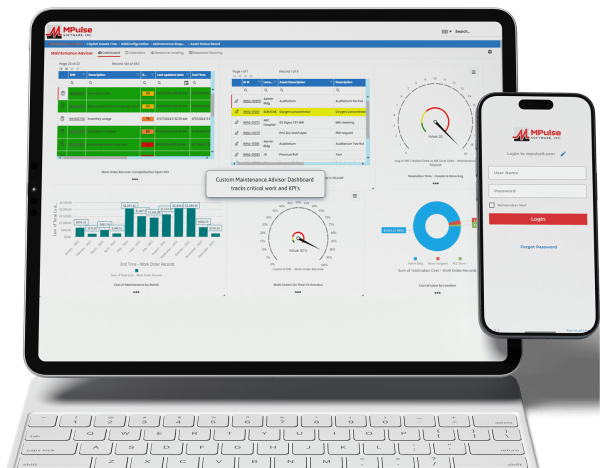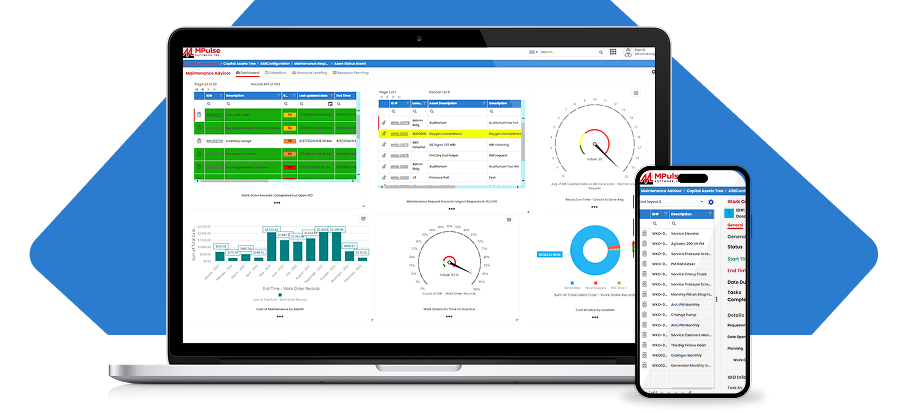Managing your maintenance operations with a CMMS establishes visibility. You can learn what’s going right, when you need to make improvements, and where you’re spending your dollars.
However, CMMS success requires careful planning. Here are five common mistakes that we’ve seen organizations make, and how to avoid them.
Table of Contents
#1: Fail to lead
One of the biggest issues we’ve seen with CMMS implementation is a lack of leadership. Technical difficulties, management turnover, employee resistance, and adjustments in company direction are predictable. Managers need to stay on their toes and quickly address changes to maintain momentum.
It’s your responsibility to maintain an open dialogue, set and manage expectations, and clearly communicate what you need from stakeholders. We recommend Including members of the production, planning, purchasing, operations, and IT departments on your CMMS implementation team, because these departments are most affected by a new solution. Let them tell you which business processes need improvement. Then hammer out agreeable objectives mapped to new business processes.
#2: Choose the wrong vendor
Whether you’re considering a large vendor or a small one, there are many ways to assess whether a company will be a good long-term partner. We recommend choosing a company you’re certain you’ll be happy with over the long haul. Shop for a financially secure vendor with proven ability to expand the solution as your company grows.
Beware of providers that rely heavily on partners for key functionality. When considering industry-specific software, make sure to find out if it really delivers on its promise. Talk to other corporate users in your field. Try out the software. Choose enough functionality to meet your business needs without sending your IT department on endless quests for the Holy Grail.
#3: Budget unrealistically
To create a realistic budget for CMMS software, you need to consider more than just the price of the software itself. Typically, you’ll pay for the base software and then the number of user licenses you need. However, to ensure CMMS success, also consider the costs of start-up training, integration services, data migration from legacy systems, hosting, and maintenance/support agreements. CMMS customization and integration with existing software are two big expenses that you should consider carefully.
We also recommend calculating exactly how CMMS will benefit your business. Strive to answer this question in terms of measurable ROI (return on investment). What will really improve your bottom line is how your CMMS helps your employees use maintenance data more effectively. That can help with the budget approval process.
#4: Implement too quickly
Change is never easy. In the case of CMMS, employees especially may fear the accountability involved in posting data that exposes true performance. Start your CMMS initiative in a single department that stands to benefit the most in the short term; then follow with a zealous, company-wide CMMS proponent. When others witness the initial success of the first department, bringing everyone on board will be much easier.
Market CMMS to employees and deliver ongoing training. It may sound obvious, but it’s important to remember that employees have to use the solution in order for it to work. Clearly communicate how it will help them succeed, and start CMMS training early on. This way, you’ll chip away faster at the 18 to 24 months it typically takes employees to adopt new business processes.
#5: Import inaccurate or unnecessary data
If you’ve decided to migrate to new software, it’s usually because key needs aren’t being met by your current system. Now is the time to make decisions about what you really need to keep. Or, another alternative is to simply start fresh. Your legacy data and old work orders can remain where they are for historical reference, and you simply add assets, parts, and preventive maintenance schedules to the new system.
Maintenance data is the backbone of CMMS. Most companies store duplicate and outdated data in multiple locations. Putting this data in a unified database, scrubbing it, and making it available to the entire organization before implementation will make for a smooth rollout. If necessary, get help from vendors who offer data-cleansing services.
Follow these guidelines to streamline that process and avoid the typical pitfalls that kill new CMMS initiatives. Start by contacting MPulse or try our ROI Calculator to find out how we can help you implement your new CMMS.






